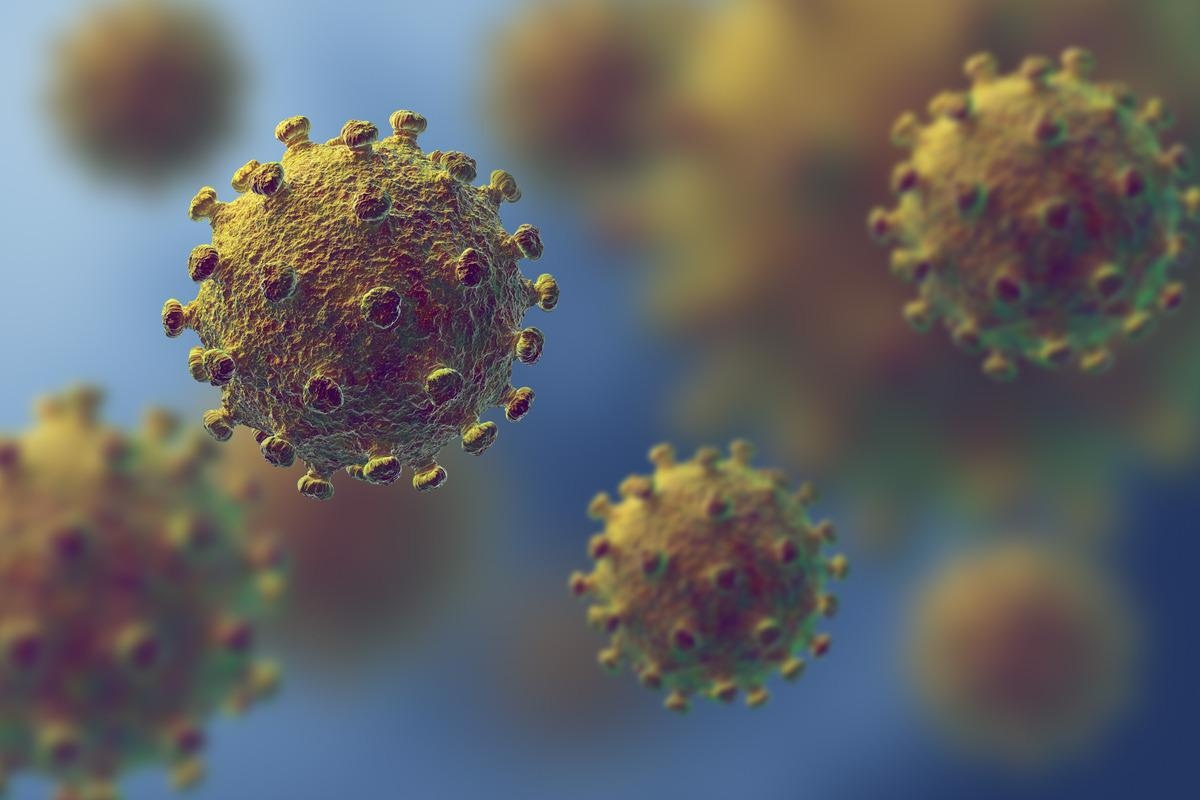The emergence of RNA viruses of zoonotic origin has caused global health concerns in recent years. Novel zoonotic coronaviruses (CoVs) demand special attention because of their high spread potential and transmissibility rate, which frequently result in devastating epidemics spanning numerous nations, exacerbated by the absence of effective therapeutics.
 Study: Novel antiviral activity of PAD inhibitors against human beta-coronaviruses HCoV-OC43 and SARS-CoV-2. Image Credit: Shawn Hempel/Shutterstock
Study: Novel antiviral activity of PAD inhibitors against human beta-coronaviruses HCoV-OC43 and SARS-CoV-2. Image Credit: Shawn Hempel/Shutterstock
Human (H)CoVs have been identified as causes of human disease for many years, but it is only since the severe acute respiratory syndrome CoV (SARS-CoV) outbreak in 2002 that effective interventions have begun to be discovered. Following this, there have been two major cases of zoonosis: the Middle East respiratory syndrome coronavirus (MERS-CoV), which resulted in people developing MERS, and the severe acute respiratory syndrome CoV-2 (SARS-CoV-2) which is the causative virus of the current coronavirus disease 2019 (COVID-19) pandemic.
Background
The majority of approved antiviral drugs used today are compounds such as remdesivir, which act against viral proteins vital for infection of host cells and are in a group called DAAs. Drugs that operate on host-cell components involved in viral replication make up a newer class of antiviral medicines known as host-targeting antivirals (HTAs). Most studies to date have focused on analyzing viral proteins and identifying possible DAAs.
Peptidyl-arginine deiminases (PADs) are a group of calcium-dependent enzymes expressed in humans that catalyze citrullination, also referred to as deimination, a posttranslational modification (PTM), where the guanidinium group of a peptidyl-arginine is hydrolyzed to generate peptidyl-cirtulline.
Dysregulation of PADs is linked to various pathological mechanisms and there have been relationships identified between dysregulation and viral infections. This has resulted in the production of several PAD inhibitors.
In a recent study published in Antiviral Research, a team of researchers aimed to determine if PAD inhibitors may be used as a novel class of HTAs against HCoVs. To do so, the authors used cell-based experiments to test the antiviral effectiveness of the previously noted pan-PAD and specific-PAD inhibitors against two members of the beta-CoV genus: HCoV-OC43 and SARS-CoV-2.
The study
The authors used an electrophoresis analysis of protein lysates derived from MRC-5 lung fibroblasts infected with HCoV-OC43 (MOI 1) and treated them with the citrulline-specific probe Rh-PG to see if the protein citrullination profile would be altered during HCoV infection. HCoV-OC43-infected MRC5 cells demonstrated a strong rise in total protein citrullination at 48-hours and 72-hours post-infection (hpi), but this did not occur for mock-infected cells.
Infected cells were then treated with the panPAD inhibitors Cl-A and BB-Cl and viral RNA production was measured using real-time RT-PCR to see if PAD enzymatic activity played a role in HCoV-OC43 replication. Incubation of HCoV-OC43-infected MRC5 cells with increasing concentrations of these inhibitors resulted in a dose-dependent decrease in viral genome copies, which reached statistical significance at 50 μM for Cl-A and 0.5 μM for BB-Cl.
At either IC50, none of the PAD inhibitors dramatically impacted cell viability, according to the findings. The SIs of Cl-A and BB-Cl in HCoV-OC43-infected MRC-5 were relatively similar and both were more than ten, based on the predicted IC50 and CC50. Cl-A and BB-Cl significantly reduced both intracellular and extracellular viral genome copy counts, indicating the critical mechanism of citrullination in HCoV-OC43 replication and the viral cycle.
The scientists wanted to extend their analysis to Vero-E6 cells because they are a commonly utilized cellular system to investigate beta-CoV replication in the presence of prospective antiviral drugs. Initially, they used varied amounts of Cl-A and BB-Cl to do a quantitative examination of HCoV-OC43 viral RNA synthesis at 72 hpi. In comparison to their vehicle-treated equivalents, Vero-E6 cells treated with 150–300 μM Cl-A or 20 μM BB-Cl demonstrated a significant decrease in viral genome replication.
None of the tested compounds significantly impacted cell survival at the same amounts as those used in the antiviral experiments, indicating that these strong effects were not due to the intrinsic cytotoxicity of the PAD inhibitors.
To see if HCoV-OC43 infection causes protein citrullination in Vero-E6 cells, the authors used the RhPG probe to electrophorese protein lysates from HCoV-OC43-infected cells. At 48 hours after infection, cellular protein citrullination was dramatically enhanced in these infected cells, whereas it was practically unaffected in infected cells treated with 300 M of the Cl-A inhibitors.
The effect of PAD inhibitors on SARS-CoV-2 viral genome replication was investigated to see if the findings might be applied to other beta-CoVs. SARS-CoV-2 viral genome replication was inhibited in a dose-dependent manner by both Cl-A and BB-Cl treatments, though to a lesser amount than HCoV-OC43.
Protein lysates obtained from SARS-CoV-2 infected Vero-E6, treated with or without Cl-A, were examined by Rh-PG to evaluate the protein citrullination profile throughout SARS-CoV-2 infection. The citrullination profile of these SARS-CoV-2-infected cells was similar to that seen after infection with HCoV-OC43, with both showing a signal lower than 50 kDa that emerged after infection. Unlike in HCoV-OC43-infected cells, however, the citrullination signal was never totally lost after Cl-A treatment, even if it was much decreased.
Implications
According to the findings, citrullination plays an unexpected function in the reproduction of two human coronaviruses, namely, HCoV-OC43 and SARS-CoV-2.
The authors show that increased PAD activity is essential for Beta-HCoV replication, suggesting that PAD inhibitors could be used as new HTAs to combat Beta-HCoV infections.
Proteomics techniques are being used to examine the target citrullinated proteins, as well as to test the anti-HCoV efficacy and safety of various PAD inhibitors in a broader range of cell lines that more precisely resemble the different organs where the virus replicates in vivo.